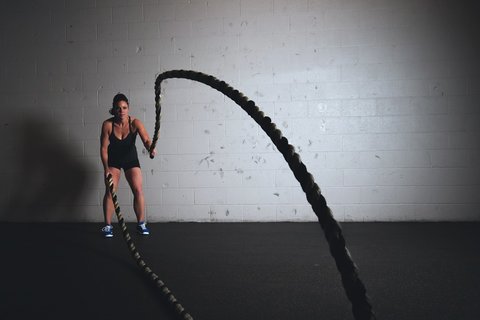A Guest Post by Jeff Fish.
The general task of most strength training professionals is to build programs that produce results within the timeframes given by the sport calendar. There are some time periods that are limiting and non-negotiable and planning has to be geared around these dates. These dates can correspond to periods of mandatory practice sessions, periods of no physical activity, and periods of time when an athlete is away from the organization. And there are also periods designated to training, and the strength training professional has full authority over the content being taught.
The challenge is to determine the parameters that are to be improved upon, and monitoring these plans with daily feedback. These should be prioritized depending on the time of the year. The parameters, once decided upon by sport, then need to be systematically planned into sound regimes in order to accomplish the goal of attainment and influence on the improvement of sport specific movements. For example, within the sport of American Football, there are several parameters that include maximum strength, explosive power, high speed strength, reactive ability, and anaerobic power to name a few. In order to fulfill the acquisition process of these parameters, the performance coach must be able to balance the appropriate load and recovery cycles for each of the athletes under his/her supervision. This can be a delicate task to say the least especially in some sports where roster sizes are above 20. There has always been a premium placed on mapping out training plans that outline an athlete’s work in the weight room for months at a time. I too prefer to have a yearly, and in some cases, multiple year plans for athletes. However I have been exposed to plans presented at seminars or through conversation that are written in stone and the athletes are pressed through this plan with no alternative route built in. It is a purely linear approach with workloads increasing over time as the only managed variable. With this mindset, I believe, you are plugging all athletes into this scheme and hoping for significant improvements in each athlete, a one size fits all mentality. Even if you account for some positional differentiation, we are still assuming that one size fits all within that position. I feel that physiology should drive our planning as each athlete will have their own specific rate of adaptation.
At the college level, there is a range in ages from 17-23 years old, and not to mention a training age of 0-8 years. This will greatly influence the adaptation process within these athletes — what could be great for one athlete in terms of ideal workload, could be too little or too much for another. This is why I feel that having organized plans are a great guide to organize goals and emphasis, but how each athlete accomplishes these complex tasks will be a direct reflection of how they adapted to those loads. And each athlete has their own unique functional system and developmental level at that time of training which has to be taken into consideration in order to maximize the adaptation process.
In professional sports the range of developmental levels is also significant. There can be age ranges from 20-40’s and the athletes can be trained within a specific system for several years. At this level it is most important to be able to assess, address, and prescribe the sufficient load in order to get the desired response. I have been a strong proponent at this level to focus heavily on the preparation of these athletes to proper physical states through the use of many methods and means. These athletes are highly skilled and their potential for adding more skill is very slight. The risk in taking on this approach is to focus too much time on skill attainment that we over work our athletes and neglect the recovery strategies needed. Therefore depleting the physiological component necessary to allow skill to be displayed at the highest level due to incomplete recovery/fatigue. I will always opt for a highly skilled athlete to be at their physiological optimal level on competition day, over risking possible fatigue and CNS drain for some extra practice volume. Again, it goes back to assigning priority to, and planning session to accomplish optimal levels of all needed parameters.
Finally, as we ponder what is the best way to achieve that next level of performance, we should consider all the factors and try to build a system that is as strong as steel with its methodology, but also have the elasticity and flexibility to adjust for unforeseen circumstances. It is up to us to be on the lookout for biological and developmental variables that can give us guidance in helping put an athlete in the best position to improve. Whether it is long term or short term planning, this approach can be applied with great results at anytime, with any athlete.
Jeff Fish is a leading performance specialist who has used an innovative, cutting edge approach to develop some of the most elite athletes in professional and college sports. He is also on the Advisory Board for the Nike SPARQ Athletic Performance Division.
